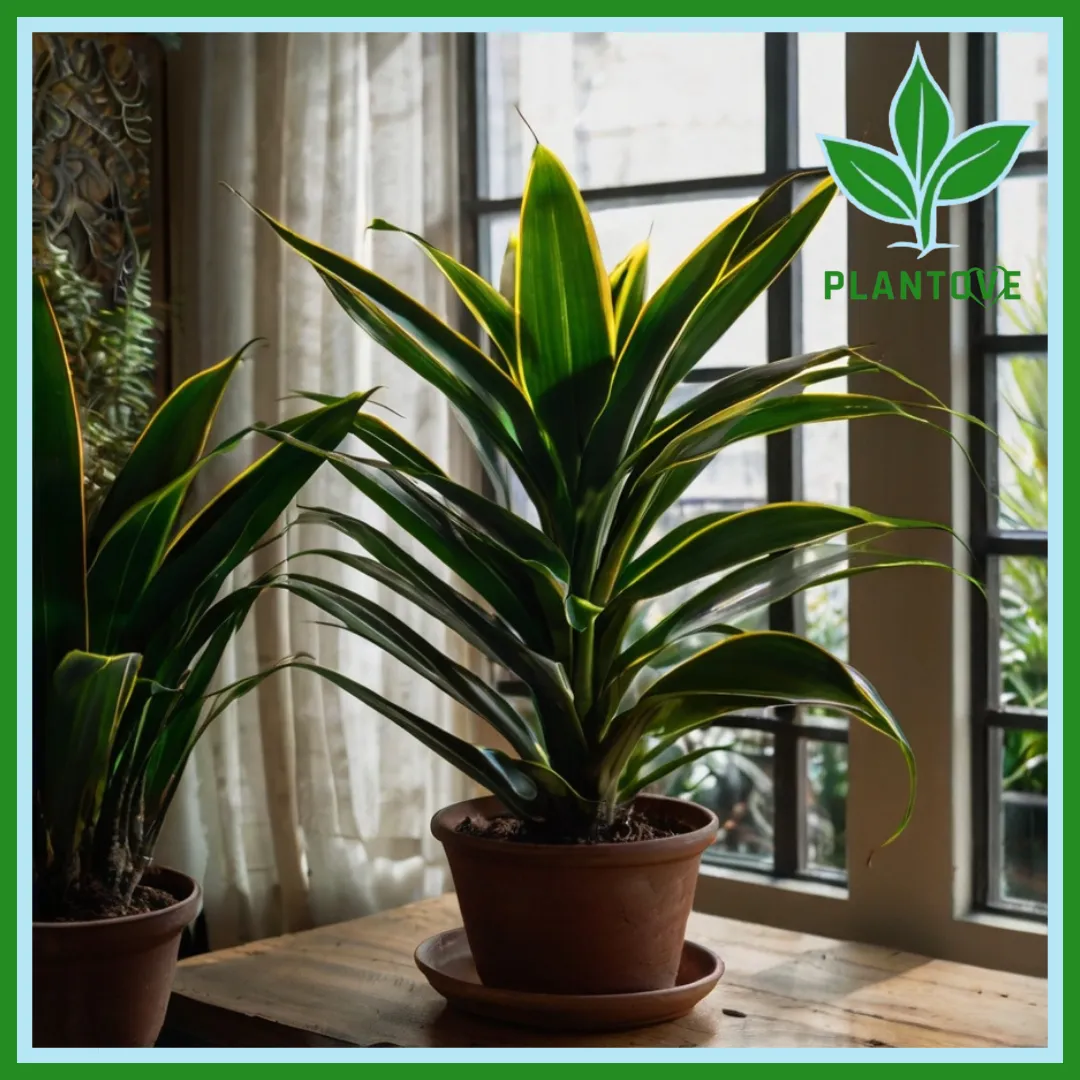The Dracaena plant, known for its striking appearance and low maintenance requirements, has become a favorite among indoor gardeners. With its varied species and forms, the Dracaena plant can add a touch of elegance and greenery to any space. This guide explores the essential aspects of Dracaena care, including benefits, care tips, and more.
Introduction to the Dracaena Plant
The Dracaena plant belongs to the Asparagaceae family and is renowned for its versatility and adaptability. Native to tropical regions of Africa, Asia, and the Pacific Islands, Dracaenas are popular houseplants due to their attractive foliage and ease of care. They come in various species, each with unique characteristics, making them suitable for different indoor environments.
Types of Dracaena Plants
- Dracaena Marginata (Dragon Tree)
The Dracaena Marginata, also known as the Dragon Tree, is one of the most popular species. It features long, slender leaves with red edges and can grow up to 10 feet tall indoors. This plant thrives in bright, indirect light and prefers moderate watering. - Dracaena Fragrans (Corn Plant)
The Corn Plant is characterized by its broad, arching leaves and a trunk-like stem. It can grow up to 6 feet tall indoors and is known for its air-purifying qualities. The Corn Plant prefers low to medium light and requires less frequent watering compared to other Dracaenas. - Dracaena Surculosa (Gold Dust Dracaena)
The Gold Dust Dracaena is recognized by its speckled foliage, which resembles golden dust. It is a compact plant that grows up to 3 feet tall and is ideal for smaller spaces. It thrives in bright, indirect light and requires regular watering. - Dracaena Sanderiana (Lucky Bamboo)
Often confused with true bamboo, Dracaena Sanderiana features thin, green stalks and is commonly grown in water. It is believed to bring good luck and prosperity and prefers low to bright indirect light. - Dracaena Reflexa (Song of India)
The Song of India has narrow, arching leaves with yellow or cream stripes. It can grow up to 4 feet tall and is known for its striking appearance. This plant thrives in bright, indirect light and needs moderate watering.
Benefits of the Dracaena Plant
Dracaena plants offer several benefits, making them a valuable addition to any home or office:
- Air Purification
Dracaenas are excellent air purifiers, removing toxins such as formaldehyde and benzene from the air. This makes them ideal for improving indoor air quality, especially in enclosed spaces. - Low Maintenance
One of the key benefits of Dracaenas is their low maintenance requirements. They are forgiving of neglect and can tolerate a range of light conditions, making them suitable for busy individuals. - Aesthetic Appeal
With their varied foliage and forms, Dracaenas add a touch of elegance and greenery to any room. Their attractive appearance makes them popular as decorative elements in homes and offices. - Improved Humidity
Dracaenas can help increase humidity levels in indoor environments. This is beneficial for both the plant and the surrounding air, especially in dry indoor climates.
Dracaena Plant Care

Proper care is essential to ensure your Dracaena plant thrives. Follow these guidelines to keep your plant healthy and vibrant:
- Light Requirements
Dracaenas generally prefer bright, indirect light but can tolerate lower light conditions. Avoid placing them in direct sunlight, as it can scorch their leaves. For optimal growth, provide them with filtered light or place them near a window with sheer curtains. - Watering
Dracaenas are sensitive to overwatering. Allow the top inch of soil to dry out before watering again. During the winter months, reduce watering frequency as the plant’s growth slows down. Ensure that the pot has good drainage to prevent root rot. - Soil
Use a well-draining potting mix for Dracaenas. A mix designed for houseplants or a combination of peat, pine bark, and perlite works well. Avoid heavy, clayey soils that retain excess moisture. - Fertilization
Feed your Dracaena with a balanced, water-soluble fertilizer every 4-6 weeks during the growing season (spring and summer). Reduce feeding during the winter months when the plant’s growth slows down. - Pruning
Regular pruning helps maintain the plant’s shape and remove any dead or damaged leaves. Trim the tips of the leaves if they become brown or dry to encourage new growth. - Pest Control
Dracaenas are relatively pest-resistant but can occasionally attract pests such as spider mites, scale, and mealybugs. Inspect the plant regularly and treat infestations with insecticidal soap or neem oil. - Repotting
Repot your Dracaena every 2-3 years or when it outgrows its current pot. Choose a pot that is 1-2 inches larger in diameter than the previous one. This provides ample space for root growth and helps maintain the plant’s health.
Using Dracaenas in Interior Design
Dracaenas are versatile plants that can be incorporated into various interior design styles:
- Modern and Contemporary Spaces
Dracaenas’ sleek, architectural forms complement modern and contemporary decor. Use them as focal points in minimalist settings or as statement pieces in large, open spaces. - Office Environments
The low maintenance and air-purifying qualities of Dracaenas make them ideal for office environments. Place them in corners or near desks to enhance the workspace and improve air quality. - Living Rooms and Bedrooms
Dracaenas can add a touch of greenery to living rooms and bedrooms. They work well in both formal and casual settings, providing a sense of tranquility and elegance. - Mixed Plant Displays
Combine Dracaenas with other houseplants to create a lush, indoor garden. Mix different species and sizes to add visual interest and variety to your plant displays.
Conclusion
The Dracaena plant is a versatile and attractive addition to any indoor space. With its range of species, low maintenance requirements, and numerous benefits, it is an excellent choice for both novice and experienced gardeners. By following the care guidelines outlined above, you can ensure your Dracaena plant remains healthy and vibrant, enhancing your home or office environment.

